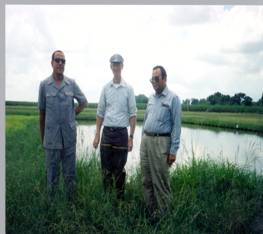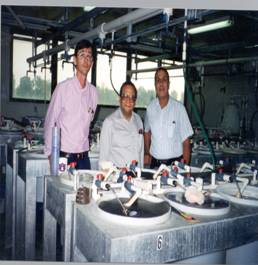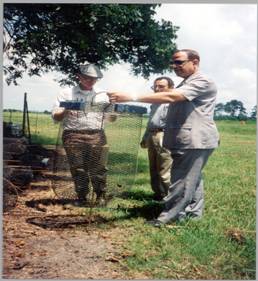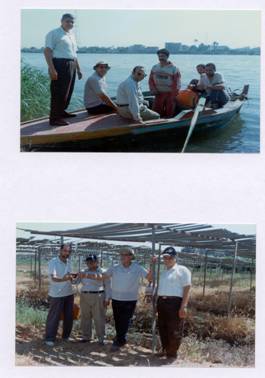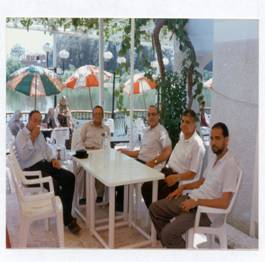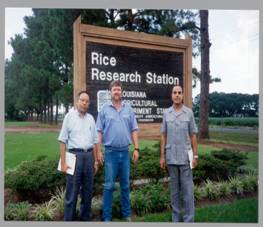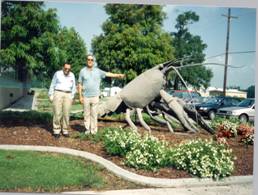TEXGED – Crawfish Project
Summary of the Crawfish Project
Crawfish project was funded by United States of America, The International Development Agency (AID) and Supreme Council of the Egyptian Universities in Cairo in 1997 and completed in October 1998. The project has been funded for $50,000 in collaboration with Ain Shams University, Egypt. The pictures in this text show the visiting experience for the Egyptian Scientists accompanied by American Scientists to Louisiana State University, USA and the development of crawfish nets that used in USA and its processing for food . Also, the Egyptian Scientists visited the crawfish farms.
The main idea of the project is to develop a scientific computational model to determine the time of spread of the populations and the size of Procambarus calarcii (i.e. Crawfish) populations in the River Nile in Egypt. The crawfish’s of Procambarus calarcii is an exotic species to the River Nile environment. The Egyptians consider crawfish species as a pest to their River Nile environment. Further, the fishermen are suffering from this exotic species because it causes many sever problems to their catch of fishes from the River Nile by reduction of the catches from other native fishes that the Egyptians are adapted to eat. In this respect the Egyptian ere not adapted to eat the crawfish as a supply of food.
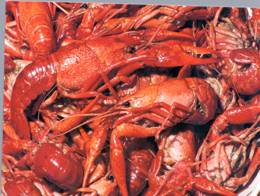
The above pictures were taken in Egypt when American PI Visited Egypt in visiting the collected samples sites in Egypt in 1998.
Because of the increase of the crawfish populations in the River Nile because the suitable habitat in the River to increase its population, the Egyptians tolerated to eat this creature as a source of food and as the result the population of this species has increase in the river to cause severe environmental problem in the river in addition to the damages to the levees and other constructions on the rivers. The Egyptian scientists collected samples about the ecological parameters such as water velocity, salinity, pH, and other ecological parameters, in addition to samples of crawfish populations from several stations on the river. Then these data were incorporated in developing an ecological computational model developed by the American scientist at TEXGED Center, Prairie view A&M University. Further, the ecological computational model was incorporated in Geographical Information System (GIS) and used to predict the extended spread of crawfish populations in River Nile in Egypt and how long of time that it takes the crawfish populations to spread from Northern of Egypt to Upper Egypt near the borders of Sudan. The major added knowledge of this project can be summarized as follows:
- The Population density and biomass of the newly introduced Procambarus calarcii investigated in four selected stations in Egypt.
- It was found that this have been affected by the prevailing environmental factors such as water temperature, dissolved oxygen and pH of the water of the water streams and canals in the studied areas.
- The biological factors such as benthos and zooplankton biodiversity have also affected the crawfish distribution.
- Application of the GIS spatial analysis incorporated with developed analytical and populations of crawfish computational model showed that density of the crawfish currently occupying most of the lower Egypt canals especially in the Middle of Delta and is being expanded outwards of Delta and growing spreading the crawfish towards Upper Egypt.
- Further studies on crawfish in Egypt are needed to confirm the model’s prediction.
The above findings were published in the Egyptian Journal of Aquatic Biology and Fisheries. The citation of these findings is as follow:
Shakir, S.H. and Ibrahim, A. (1998). Population dynamics and distribution of the newly introduced crawfish Procambarus calarcii in Egypt using Geographic Information System (GIS). Vol. 2, No. 4.537-551.
